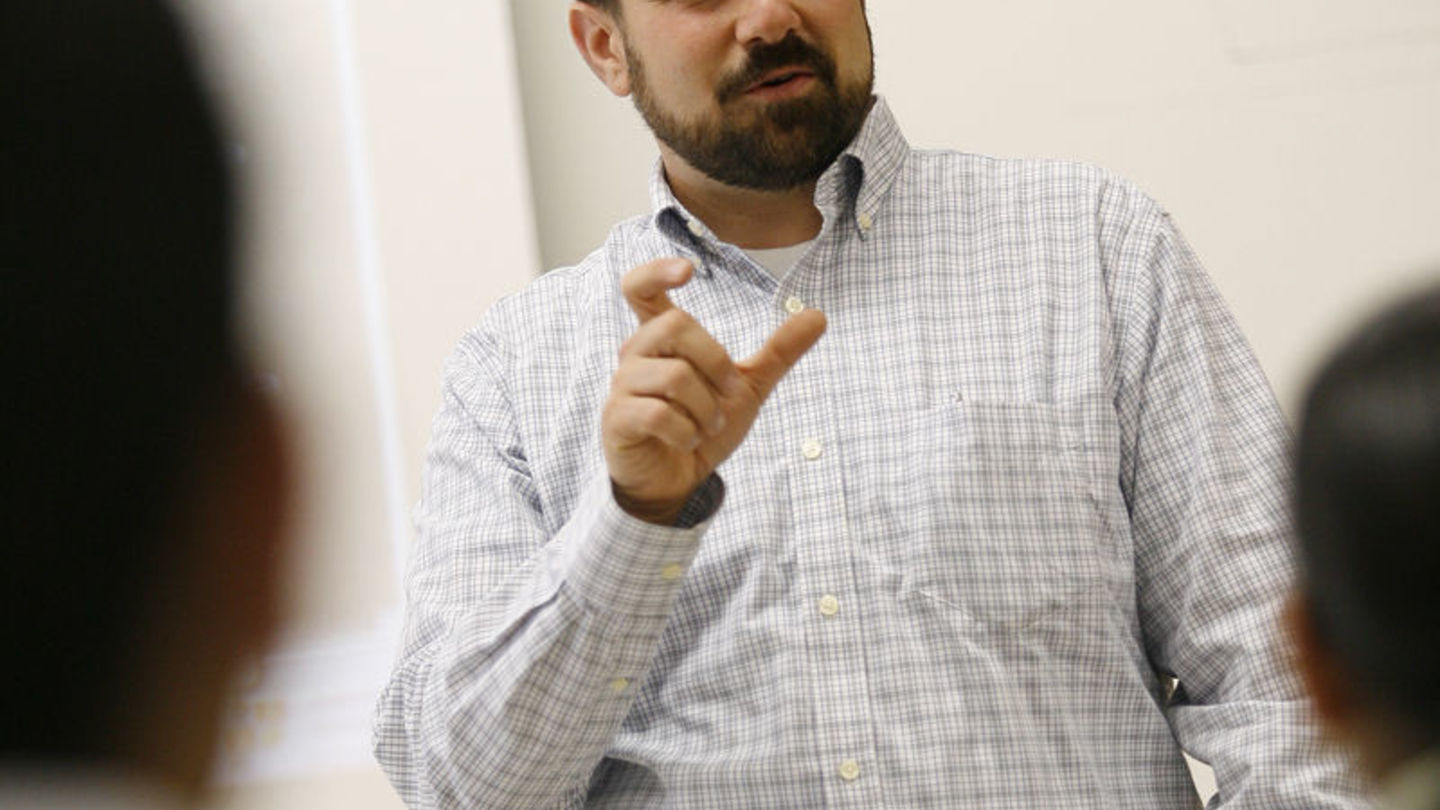
The southwest neighborhoods of Philadelphia bear the scars of a long history of industrial use. From old oil refineries to shut down and underutilized manufacturing plants, it is a region ripe for redevelopment.
It is also an area dense with brownfields, old industrial properties, which developers often avoid fearing potential leftover hazards and lengthy, costly clean-up processes.
During the spring 2015 semester, Department of Community and Regional Planning graduate students completed a comprehensive report entitled "Addressing Brownfields, An Inventory and Redevelopment Plan for Southwest Philadelphia," created for the Southwest Community Development Corporation. The highly detailed 136-page report explores every facet of the numerous clusters of brownfields in the region, providing a key resource in identifying and prioritizing locations for reuse and redevelopment.
"Southwest Philadelphia has a history of industrial land use, which has left behind a legacy of environmental contamination as well as detrimental social and economic impacts," said Community and Regional Planning Assistant Professor Jeffrey Doshna, who guided the 10-member student team as part of the Community and Regional Planning capstone studio. "Inventories like this can be challenging and time-consuming for communities to assemble; however, once created, they have the potential to provide great insight for future community planning and development efforts."
Through projects like the brownfields study, students in Temple's Community and Regional Planning program engage in experiential, real world learning with a focus on using what they have learned in the classroom to affect positive change in area communities. Their knowledge and dedication to their chosen field has not gone unnoticed.
On October 28, Doshna's students will be presented with the 2015 Student Scholarship Award for a Group Paper by the American Planning Association's Pennsylvania Chapter — Southeast Section (APAPASE). Criteria for the honor included subject quality and originality, paper structure, technical writing, thoroughness of research, and analysis and conclusions. Temple's project was particularly recognized by the APAPASE for its thoroughness and the professionalism of the students' work.
"For this project, our students were able to provide their client a resource that they wouldn't have otherwise been able to produce on their own," Doshna said. "Our students are dealing with all of the challenges that they will face in their planning careers and they're doing it before they leave the classroom — community meetings, data analysis and comprehensive field work, which, I think, are all fundamental parts of planning education."
Planning courses at Temple "are grounded in practice," Doshna said.
"It's one of the essential components that distinguishes our planning program from others and it's certainly the type of experience that employers are seeking," he said. "Every student in the graduate studio last year is working in the planning field or have moved on to complete an advanced degree; they are working in county planning offices, the City of Philadelphia, FEMA, community development corporations, the Brookings Institute. Our students are producing professional level work and they are being hired because of that ability to work at that level from day one."
According to Doshna, for this project the Southwest Community Development Corporation was seeking a comprehensive inventory of sites of past industrial use in an area comprised of the Kingsessing, Elmwood, Eastwick and Paschall neighborhoods.
"Some brownfield sites were obvious, such as an old General Electric site, while many others were suspected," he said. "Our students discovered several hundred sites that were likely or possible brownfields, based on methodology devised by the students, which incorporated past planning department maps, satellite imagery and numerous ground site visits."
A key part of the planning process, according to the study, was to engage Southwest Philadelphia stakeholders and to connect current conditions with the community's vision for the future, specifically with regard to clusters of potential brownfields and underutilized land. Planning Studio team members attended community meetings, hosted focus groups, conducted stakeholder interviews and canvassed commercial corridors to help meet these objectives.
Using the collected information, the students created redevelopment plans for four focus areas — Cobbs Creek, Woodland Avenue, Elmwood Avenue and Eastwick. The plans centered around four major "elements of change," including job creation, clean parkland and open space areas, retail and youth opportunities.
The study, Doshna said, is already making an impact.
"The Southwest Community Development Corporation has met with the Philadelphia Industrial Development Corporation; they've met with the Philadelphia Planning Department," he said. "They are using the document exactly as it was intended — as a resource guide for future development."
Visit the 2015 Planning Studio Website for more information on the project or to review the full report. For additional information about the APAPASE award or the Community and Regional Planning program, contact 267-468-8300 or CRPlanning@temple.edu.
